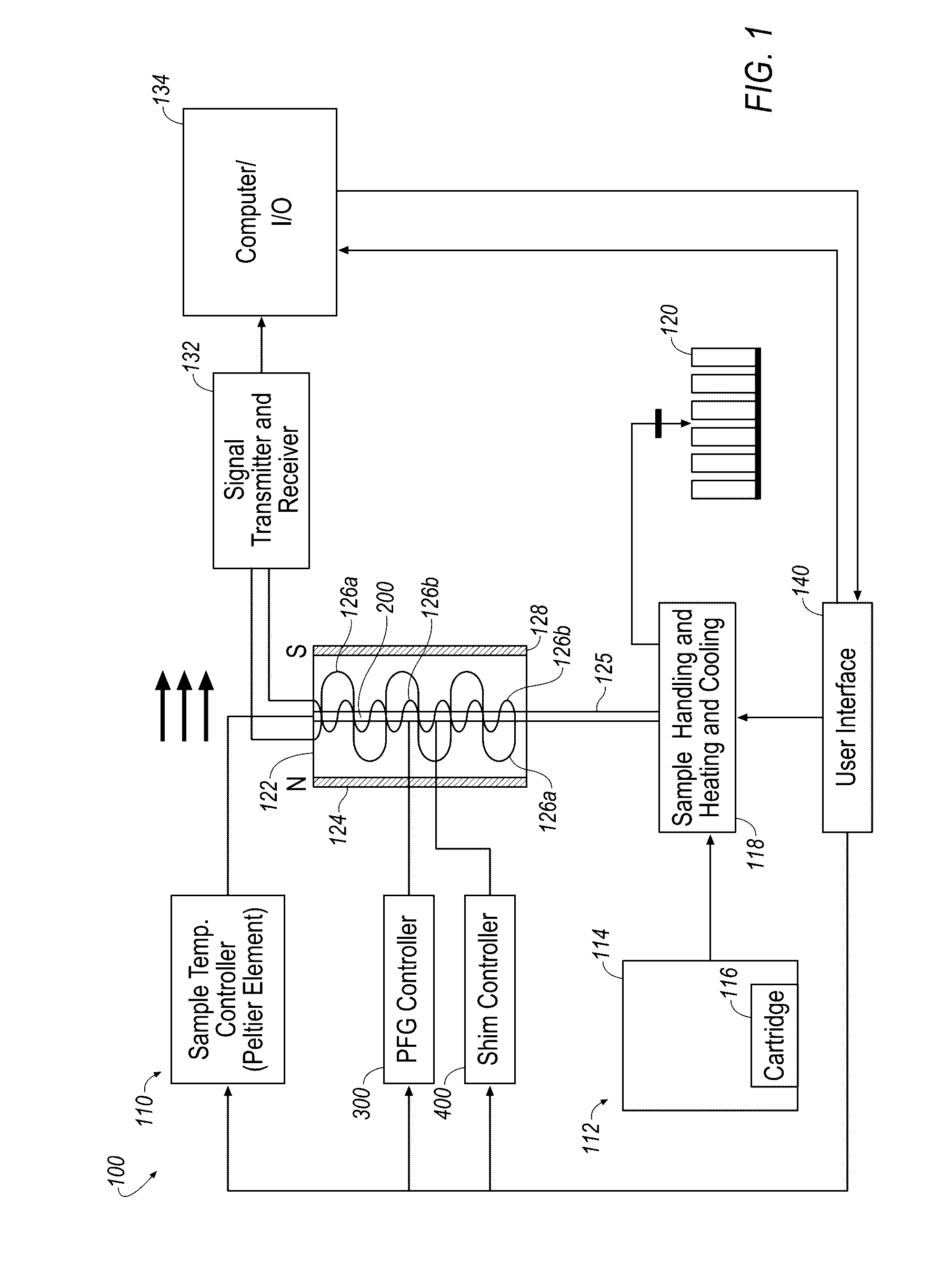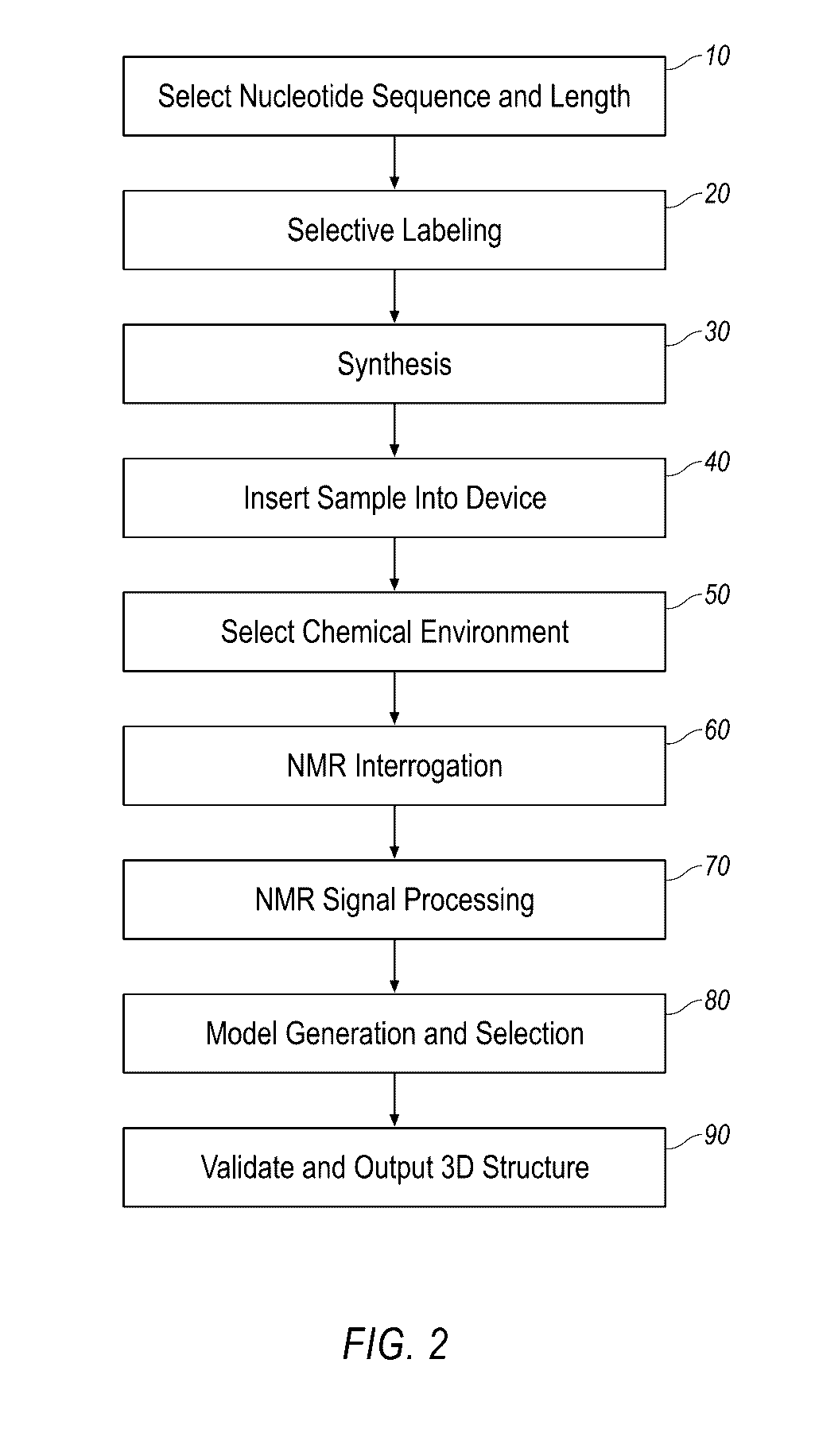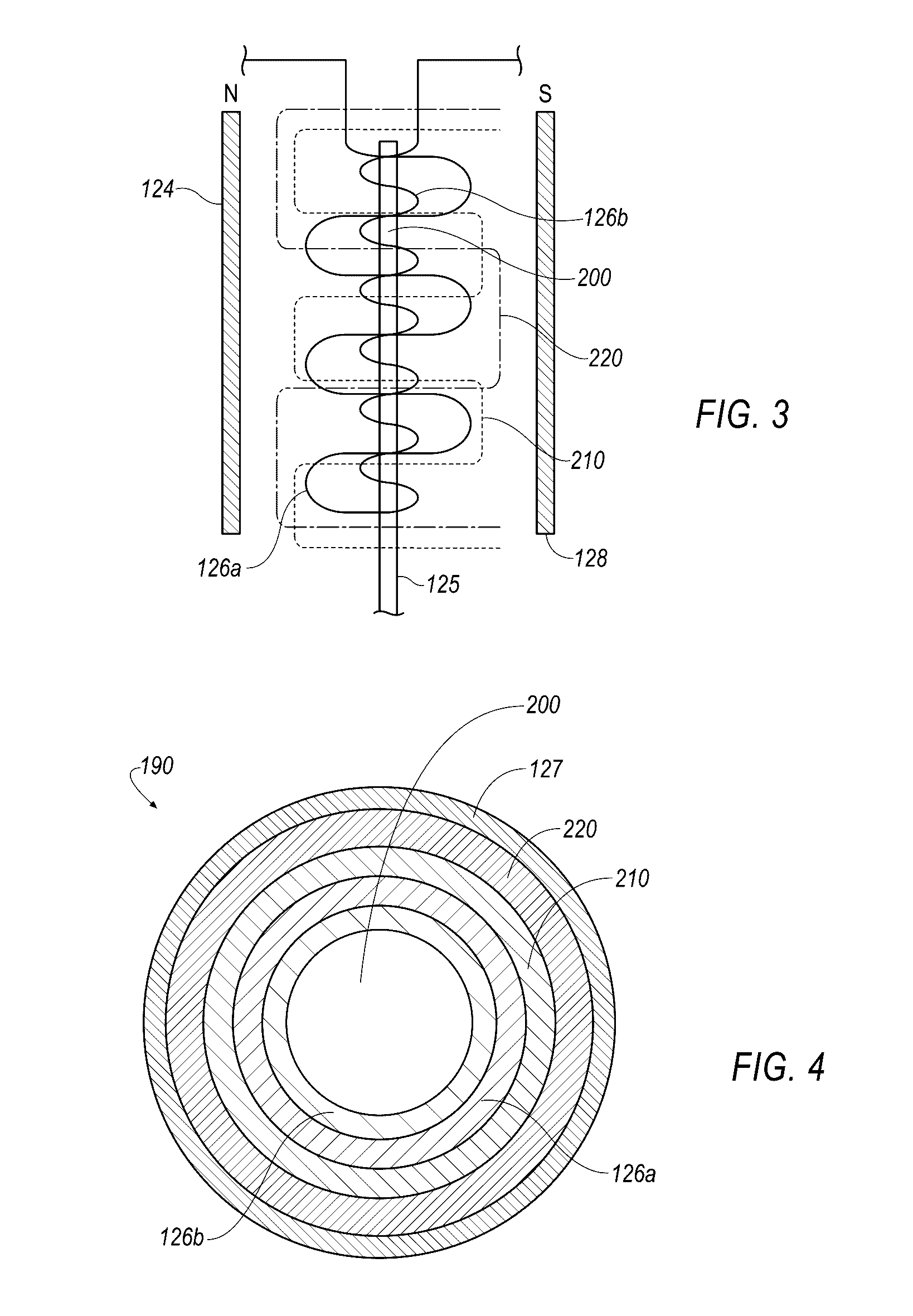Small molecule binding pockets in nucleic acids
a nucleic acid and small molecule technology, applied in the field of small molecule binding pockets in nucleic acids, can solve the problems of inability to interrogate the binding interaction between rnas and small molecules, inability to rationally design small molecule modifications to improve mirna binding affinity and activity, and inability to meet the requirements of asos delivery, etc., to achieve rapid identification, efficient and cost-effective
- Summary
- Abstract
- Description
- Claims
- Application Information
AI Technical Summary
Benefits of technology
Problems solved by technology
Method used
Image
Examples
example 1
Structure Determination of an Apical Loop Sequence of Human Pre-miR 122 RNA
[0326]The apical loop sequence of human pre-miR 122 RNA sequence was investigated as an example. Two base pairs at the 5′- and 3′-ends of the sequence were modified from the native pre-miR 122 sequence in order to stabilize the 24-mer stem loop construct for NMR studies (5′-GGCUUGUGUCUAAACUAUCAAGCC-3′) (SEQ ID NO: 2).
[0327]The secondary structures predicted by the software program MFold suggest the possibility of a long stretch (up to 12 bases) of an apical loop which combined together with redundant adenine bases in the loop sequence prohibits conventional sequential assignment using uniformly non-selectively labeled RNA sample and thus requires selective labeling for unambiguous resonance assignment and 3-D structure determination. Four RNA oligonucleotides sequences are designed for selective labeling. Each has two selectively 13C / 15N isotope labeled residues. Labeling a pair of purine (A or G) and pyrimid...
example 2
Methods of Using 1H NMR Chemical Shifts in Determining RNA Structure and Dynamics
[0340]Methods and Materials
[0341]Predicting RNA 1H Chemical Shifts. A panel of 18 RNA structures (1ZC5, 2KOC, 1Z2J, 1XHP, 2QH2, 2KYD, 1JU7, 2JTP, 2FDT, 1N8X, 2L3E, 1LW, 2JYM, 2L5Z, 1NC0, 1IDV, 2L1V, 1OW9) was used to evaluate 1H chemical shift predictions using SHIFT and NUCHEMICS. This panel represents RNA structures that have been determined by NMR following the introduction of SHIFTS and NUCHEMICS (2002-2011) for which 1H chemical shift assignments were also available in the Biological Magnetic Resonance Bank (BMRB)29 (http: / / www.bmrb.wisc.edu / ). Four additional structures (2QH3, 2QH4, 1YMO, 2JWV) were not included due to undocumented or incomplete chemical shift referencing. However, including these structures had little to no impact on the results presented here.
[0342]Molecular dynamics (MD) simulations. MD simulations of an RNA duplex (PBID:2KYD)30, UUCG tetra-loop (PBID:2KOC)31, and pre-quenosine...
example 3
Solving the A-Site Structure
[0375]The technology described herein was established using the apramycin-bound bacterial ribosomal A-site structure. A-site is a well-studied RNA that undergoes an induced-fit structural change on binding small molecule antibiotics. Specifically, A1492 and A1493 loop from inside to outside the helix on small molecule binding, which in the ribosome signals acceptance of a codon-anticodon pair effectively eroding translational fidelity leading to bacterial death. In order to test whether the chemical shifts can be used to solve the A-site bound structure, we attempted to solve the 2.7 Å resolution apramycin-bound A-site x-ray structure (PDB ID#1YRJ) using only NMR chemical shifts and a newly developed method adapted from our recent publication. Briefly, apramycin-bound A-site chemical shifts were downloaded from the Biomagnetic Resonance Databank and re-referenced using the Aeschbacher method. The A-site secondary structure was input into CONSTRUCTOR and 1...
PUM
| Property | Measurement | Unit |
|---|---|---|
| frequency | aaaaa | aaaaa |
| frequency | aaaaa | aaaaa |
| frequency | aaaaa | aaaaa |
Abstract
Description
Claims
Application Information
 Login to View More
Login to View More - R&D
- Intellectual Property
- Life Sciences
- Materials
- Tech Scout
- Unparalleled Data Quality
- Higher Quality Content
- 60% Fewer Hallucinations
Browse by: Latest US Patents, China's latest patents, Technical Efficacy Thesaurus, Application Domain, Technology Topic, Popular Technical Reports.
© 2025 PatSnap. All rights reserved.Legal|Privacy policy|Modern Slavery Act Transparency Statement|Sitemap|About US| Contact US: help@patsnap.com



